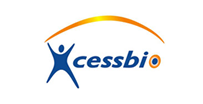
| Molecular Weight: | 369.42 |
| Formula: | C22H19N5O |
| Purity: | ≥98% |
| CAS#: | 700874-72-2 |
| Solubility: | DMSO up to 100 mM |
| Chemical Name: | 4-(2-((4-(2-(pyridin-2-yl)-5,6-dihydro-4H-pyrrolo[1,2-b]pyrazol-3-yl)quinolin-7-yl)oxy)ethyl)morpholine |
| Storage: | Powder:4oC 1 year. DMSO:4oC3 month;-20oC 1 year. |
Biological Activity:LY2157299 is a novel potent and selective TGFβ receptor type I and type II (TβRI/II) inhibitor with IC50 of 86 nM and 2 nM, respectively. LY2157299 could inhibit the TGFβ induced Smad2 phosphorylation in HUVEC cells, promote VEGF induced HUVEC cell migration, and show dose dependent potentiation of VEGF or bFGF induced cell proliferation. It can also inhibit TGFβ–mediated Smad2 activation and hematopoietic suppression in primary hematopoietic stem cells in a dose-dependent manner. LY2157199 treatment stimulates hematopoiesis from primary MDS bone marrow specimens. In vivo administration of LY-2157299 ameliorated anemia in a TGF-β overexpressing transgenic mouse model of bone marrow failure. Oral administration of LY2157299 at 75 mg/kg/day displays significant antitumor activity against both Calu6 and MX1 xenografts in mice. LY2157299 in combination with lomustine (CCNU) more effectively blocks Smad phosphorylation than either agent alone, and significantly enhances the efficacy of lomustine in U87MG and CRL-2611 human glioblastoma xenografts. Currently LY2157299 is in phase I/II clinical trials for the treatment of glioma, HCC, and pancreatic cancer. How to Use:In vitro:LY2157299 was usually used at 5-10µM in vitro and cellular assays.In vivo: LY2157299 was orally dosed to mice at 75mg/kg once per day or in combination with lomustine (CCNU) to significantly reduce the tumor volume. Reference:
- 1.Zhou L, et al. Reduced SMAD7 leads to overactivation of TGF-beta signaling in MDS that can be reversed by a specific inhibitor of TGF-beta receptor I kinase. (2011) Cancer Res. 71(3):955-63.
- 2.Bueno L, et al. Semi-mechanistic modelling of the tumour growth inhibitory effects of LY2157299, a new type I receptor TGF-beta kinase antagonist, in mice. (2008) Eur J Cancer. 44(1):142-50.
- 3.Jonathan M, et al. A small molecule inhibitor of TGFß RI kinase potentiates VEGF dependent angiogenesis in vitro. (2006) Proc Amer Assoc Cancer Res, Volume 47, Abstract #250.
- 4.Liu Z, et al. VEGF and inhibitors of TGFbeta type-I receptor kinase synergistically promote blood-vessel formation by inducing alpha5-integrin expression. (2009) J Cell Sci. 122(Pt 18):3294-302.
 LY2157299_spec.pdf
LY2157299_spec.pdf
 LY2157299_MSDS.pdf
LY2157299_MSDS.pdf
ebiomall.com






>
>
>
>
>
>
>
>
>
>
>
>
我用conA和LPS分别刺激脾细胞,当然细胞均有明显的增殖,可是如果把这两种有丝分裂原同时用来刺激细胞时,细胞的增殖明显受到了抑制,比起单独采用ConA或者LPS都低很多。conA和LPS分别刺激T细胞和B细胞的增殖,两者同时加入时,作用应该更强,为什么反而大幅减弱呢?
此外,我研究的这种成分单独刺激皮细胞时,细胞也有一定程度的增殖,但是如果这种物质与conA联合使用时,比起单独用conA时,细胞的增殖程度明显降低了一些,这又是什么原因呢?难道可以解释为我研究的这种物质有类似于LPS的作用——刺激B细胞增殖?
如果真的是这样来解释,哪位大侠能把第一个现象(conA和LPS共同作用产生拮抗)的机理帮我解释一下呢?
当抗体结合到示踪剂上时,340nm的激发光激发铕标分子,导致能量转移到Alexa Fluor 647染料上,结果产生665nm的发射光。荧光的强度与样品中的cAMP含量成反比。
本试剂盒用于检测在GPCR激动剂刺激下活细胞或者细胞膜制备品产生的cAMP。对于偶联Gαs的受体,激动剂刺激导致665nm的荧光强度降低,而拮抗剂则可以逆转这一效应;对于偶联Gαi的受体,在激动剂刺激的同时用forskolin刺激cAMP产生,那么激动剂则抑制forskolin诱导的cAMP的生成,因此对照只给forskolin的细胞组可以通过665nm荧光强度的增加反应激动剂的效应。
该试剂盒的灵敏度很高,室温下反应在20h内是稳定的。本试剂盒适用于在384孔板中进行24μl的微量分析。
2.保存条件
避光2~4℃保存,过期时间见装。
3.盒内试剂
cAMP标准品:1管,1ml。(50μM)
生物素标记的cAMP(b-cAMP):1管,25μl。
铕标的抗生物素蛋白链菌素:1管,25μl。
荧光标记的cAMP抗体:1管,40μl。
检测缓冲液:1瓶,25ml。
4.需要自配的其他溶液
l Hank’s balanced salt solution (HBSS): NaCl 8.0g、CaCl2 0.14g、KCl 0.4g、 KH2PO4 0.06g、Na2HPO4?7H2O0.09g、MgCl2.6H2O0.10 g、MgSO4.7H2O0.10 g、NaHCO30.35g、葡萄糖1.0g,加H2O至 1000ml (用7.5%NaHCO调节PH值=7.4)
l Versene消化液(1L):EDTA 0.372 g,NaCl 8.0g,KCl 0.20 g,KH2PO40.20g,Na2HPO4 1.15 g,D-glucouse 0.2 g,pH 7.4
l HEPES缓冲液(1mol/L):取2.383gHEPES溶于10ml去离子水中。
l 7.5%BSA溶液:取0.75gBSA溶于10ml去离子水中
l 0.5M IBMX溶液:11.11mg IBMX溶于100μl DMSO中,-20℃冻存。
l 刺激缓冲液(SB):14 ml HBSS(1×)+75μlHEPES(1mol/L)+200μlBSA (7.5%)。(注:在测定细胞cAMP时,反应缓冲液中要加入IBMX 0.5mmol/L)
l 吗啡贮存液(10mM):盐酸吗啡37.585mg溶于10ml生理盐水中,0.22μm滤膜过滤除菌,4℃保存备用。
l 纳络酮母液(100mM):纳络酮4mg溶于100μl 生理盐水中,用时工作液按照1:500稀释,溶剂为含有IBMX的反应缓冲液。
抑制剂刺激细胞后,需要用PBS清洗后再做后续实验吗
我做的是细胞因子的刺激和抑制某条通路后观察是否有影响,分组为空白组,空白+抑制剂,刺激组,刺激+抑制剂,最开始用的单因素方差分析,LSD-T和SNK-Q检验,但是同学说我这里面有两个处理因素,所以不能单因素方差分析,应该直接空白和空白+抑制,空白和刺激,刺激和刺激+抑制剂进行独立样本T检验,现在脑子是混乱的,拜托园子里的大神们帮我看看,感激不尽!!









